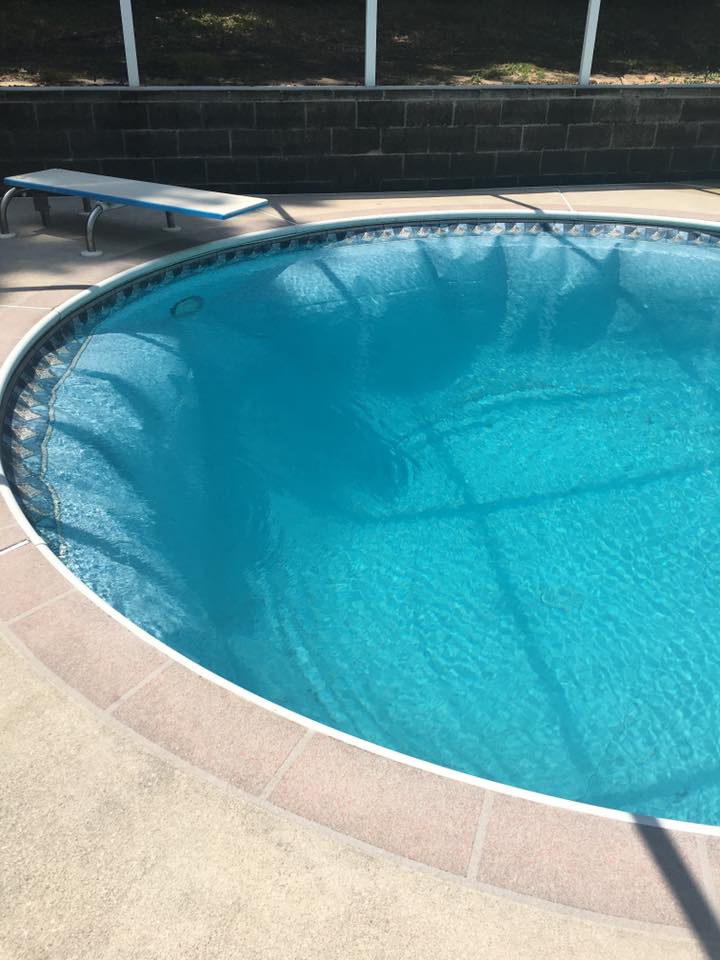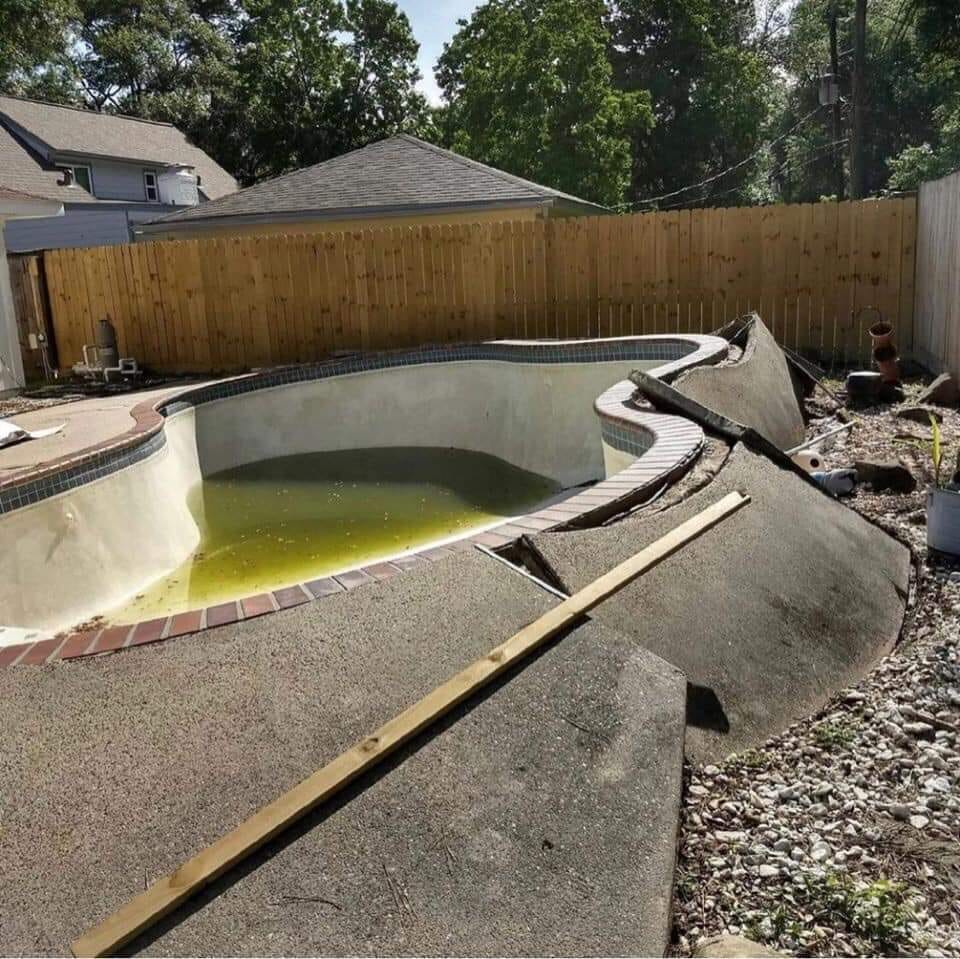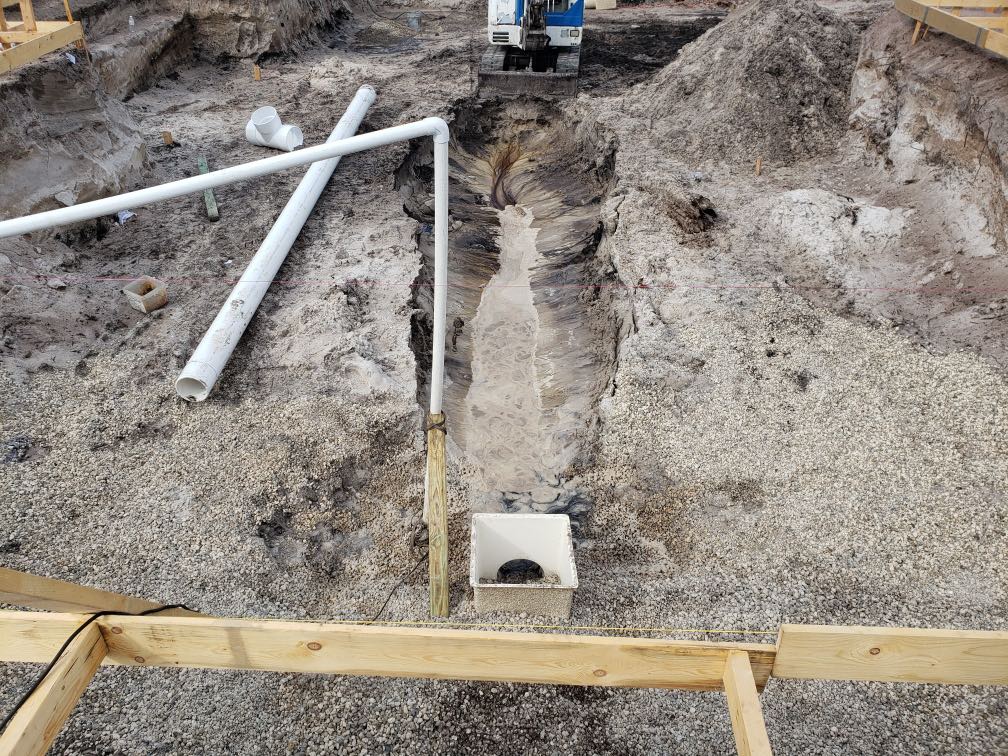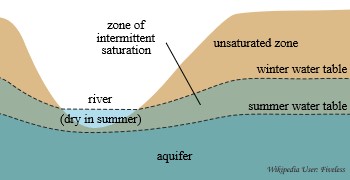Swimming Pools with High Water Tables?
When you think of building pools, you think of dirt. When you think of building pools in the South, you think of clay soil. Clay soil can pose many-a-problems in pool construction. The biggest one is heavy water saturation. Companies like Executive Pools (Lakeland, Florida) and Everclear Pool & Backyards (Chatanooga, TN) tackles this problem head-on with wellpoint systems.
Between 1999-2001 Brian Worley (Everclear Pool & Backyards) ran into it 10 times. One of the clients worked for a water company. As they built the pool, which was by a creek, the water started shooting out like a geyser! Not only that, but crawdads from the stream began spilling into the pool! That’s craw-azy!
This client gave Brian the lesson of his life and explained how well points would be the answer to his prayers to the pool gods. Brian has since perfected the notion.

Wellpoint systems are necessary at times to get an accurate soil test for compaction to make sure it doesn’t settle according to John Poma (Executive Pools Inc). They are also helpful in ensuring that the pool walls are not undermined and don’t cave in. Working with dry soil is always much easier.
May the Force Be With You
Groundwater is a force to be reckoned with. It is not for the layperson. “These problems cannot be easily rectified without proper working knowledge of how to deal with it,” Brian advises.
When the groundwater is surrounding a new pool or empty pool, it is an excellent opportunity for the pressure outside the pool to exceed the internal pressure within. This is also referred to as hydrostatic pressure. “Hydrostatic pressure is the term for the force that water exerts upon other objects when it is not in motion.”
Wellpoint systems, video credit John Poma, Executive Pools Inc
So what havoc can this wreak?
In a vinyl liner pool, the presence of groundwater can cause “floating.” “When the excessive groundwater protrudes into the pool from underneath, or in some cases, from the sides of the pool through the panels,” Brian explains. “This can force the liner up in a balloon-like fashion.”
It gets worse if wall foam was used, it would roll the foam sheets up. You think these sheets will nicely go back into place? Heck. No. You can salvage these issues, but not without a ton of work. As if building a pool wasn’t enough work, to begin with!

Out of This Ground
Folks who do drain and fill green to cleans on concrete/plaster pools that don’t pay attention to groundwater levels are going to get bit in the seat of their pants one day, says Poma. You hear about at least one pool popping up out of the ground every year. I never drain without knowing the water table. I use a post hole digger, says John. Sometimes I have had to go as far as eight feet down.
similar article News | Preparing Your Pool For a Hurricane ?
A Hydrostatic relief valve is not a guarantee, it’s just a preventative measure. Its purpose is to lessen the chance of a problem if someone were to drain a pool with a high water table. Simplified, it’s a 1 1/2″ check valve that will hopefully open and fill the pool with groundwater quick enough that the pool doesn’t pop up out of the ground, explains Rudy Stankowitz (Aquatic Facility Training & Consultants).
“Water will only pass through a 1 1/2″ hole as quickly as water can pass through a 1 1/2″ hole,” adds Stankowitz, and there is no guarantee one is even there. Many times a hydrostatic relief valve is found to be the source of a leak, is removed, and a 1 1/2″ plug is installed in its place. Sometimes, the hydrostatic relief valve was not added to the main drain sump in the first place.

A High Fiber Diet
Fiberglass pool shells do not weigh nearly as much as a concrete pool they act like a boat. When adequately sealed off inside, water cannot escape the pressure from beneath can pop the pool straight up! Cracking and splitting is another possible occurrence. In horrible, horrible instances, The pool can actually start floating away like a boat. Now, I know I left my pool around here somewhere…
All’s Well That Ends Well
Because of all of these gnarly problems groundwater can present, we need a reliable solution. Sometimes the only thing to ensure a pool remains stable is a good point. A wellpoint system is a point that provides a point of least resistance.
Since water always seeks the point of least resistance, these allow the water to follow this path and be removed and taken away from the pool. “We will typically try and determine the point around the pool where the water appears most present.”
Well Points, video credit John Poma, Executive Pools Inc
The Closer, The Better
Brian suggests, “Dig the hole as close to the pool as possible, just beyond the concrete decking.” After the hole is dug, gravel is put in 1-2 feet deeper than the deepest level of the pool. The 12” PVC pipe is inserted vertically. Dirt can be filled in at this point. “I like to install a discharge pipe close to the top of the discharge pipe. This allows a place to discharge the water to a desirable location and keep everything concealed” is Brian’s expert advice.
Brian uses a sump pump with an automatic, internal sensor so that it can be plugged in at all times. Many people will opt to have a weatherproof outlet installed near the wellpoint system to plug the pump into without the need for an extension cord.” Finally, a slip-on cap is installed. Brian suggests drilling a couple of holes in the cap and bolting the handle on.

High Fives
According to John Poma, they don’t need wellpoint systems often in Florida on commercial pool builds. Hotel and apartment pools rarely go more than five feet deep, he explained. “I wish I had pictures of some of the junior Olympic pools we had built all the way back into the ’80s, but we didn’t carry cell phones back then like we do today.”
“The hardest part is figuring out where the water is coming in,” Brian explains. A lot of the time the cause isn’t groundwater, but runoff.”
So there ya have it. The saving grace you need to save your pool in a wet area. Don’t have a wellpoint system in place? Luckily these bad boys can also be installed after the fact.
| Join Our Group on Facebook | |||||||
|
|||||||






Pingback: 7 Easy Ways to Find The Pool Leak - Pool Operator Talk News🗞